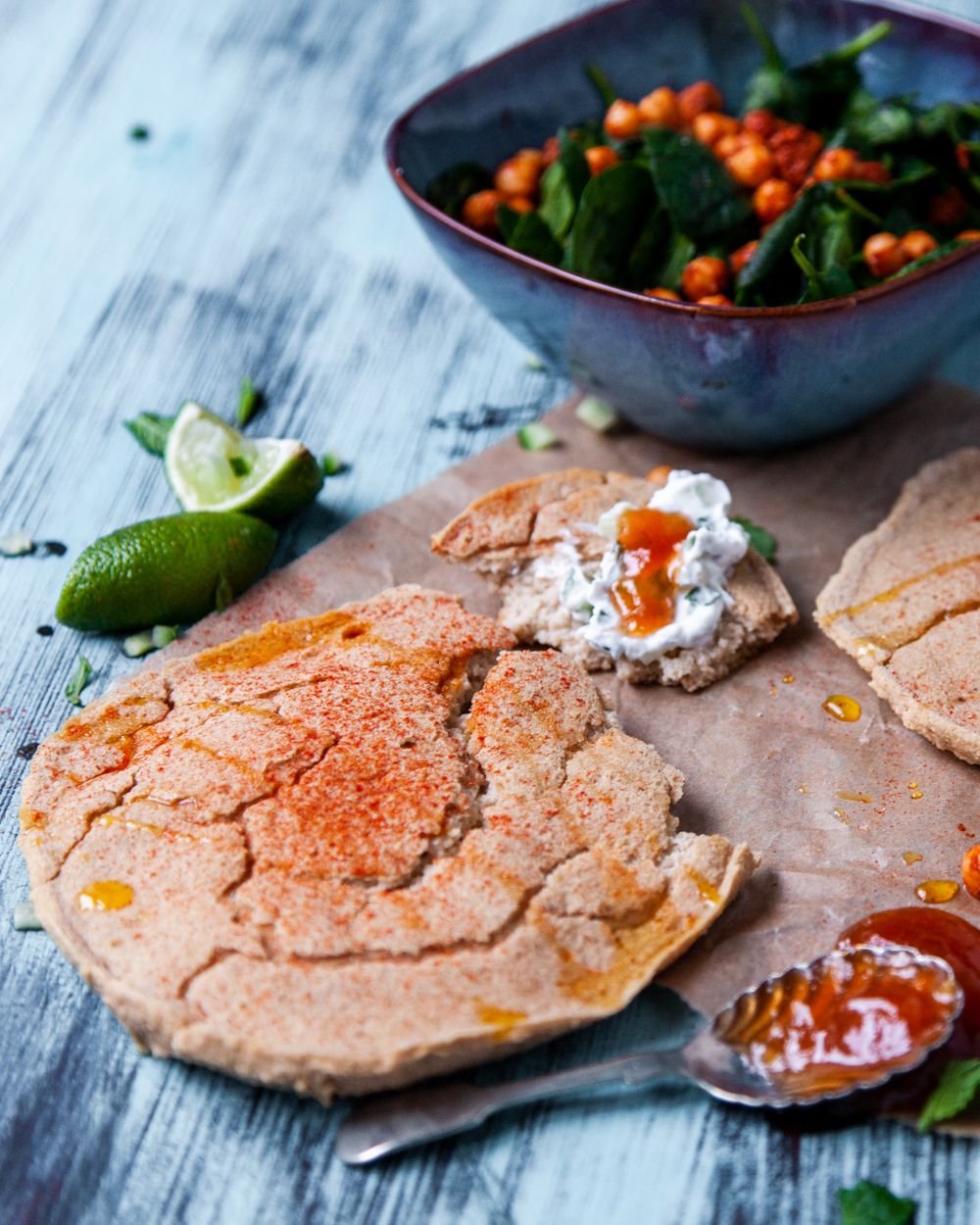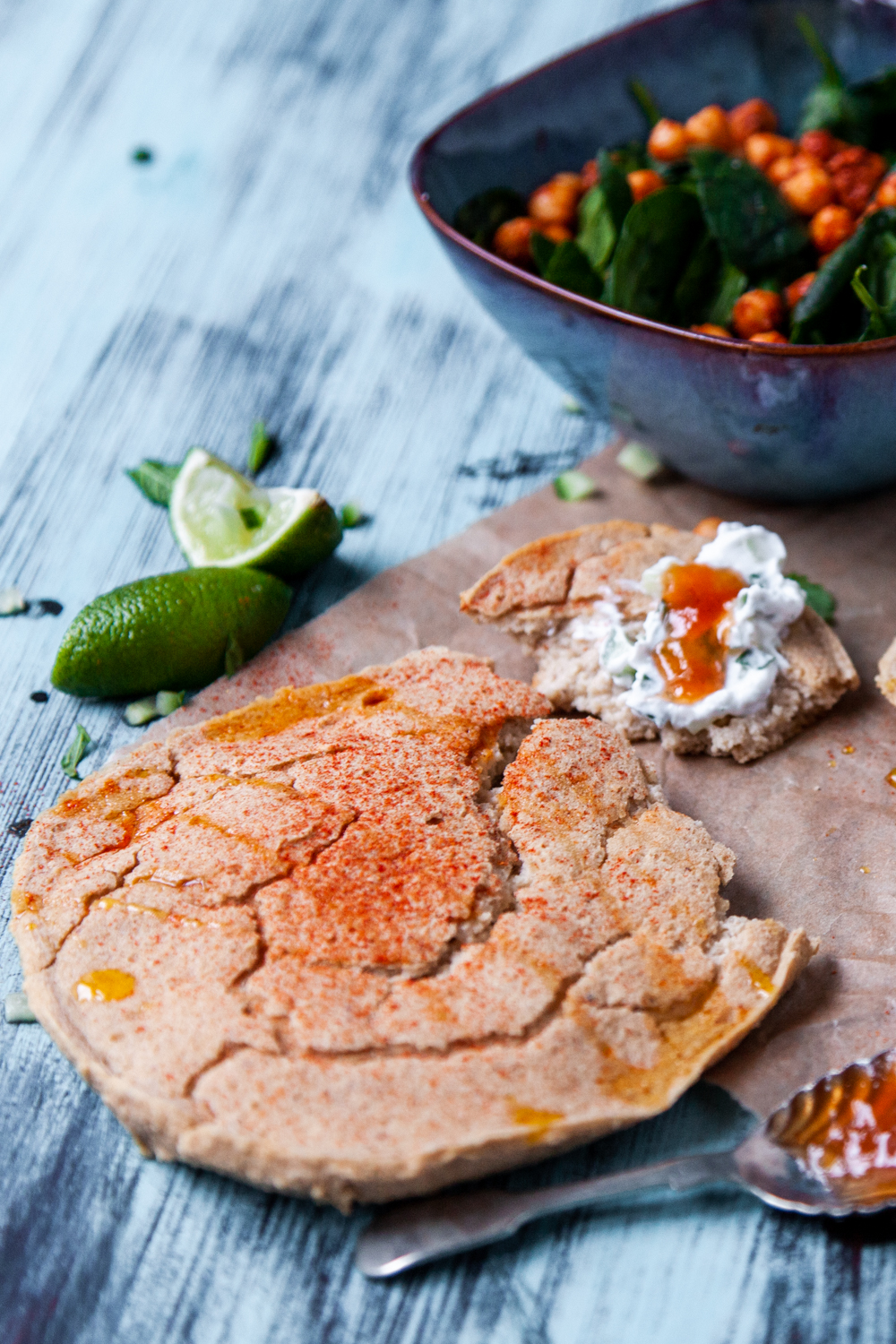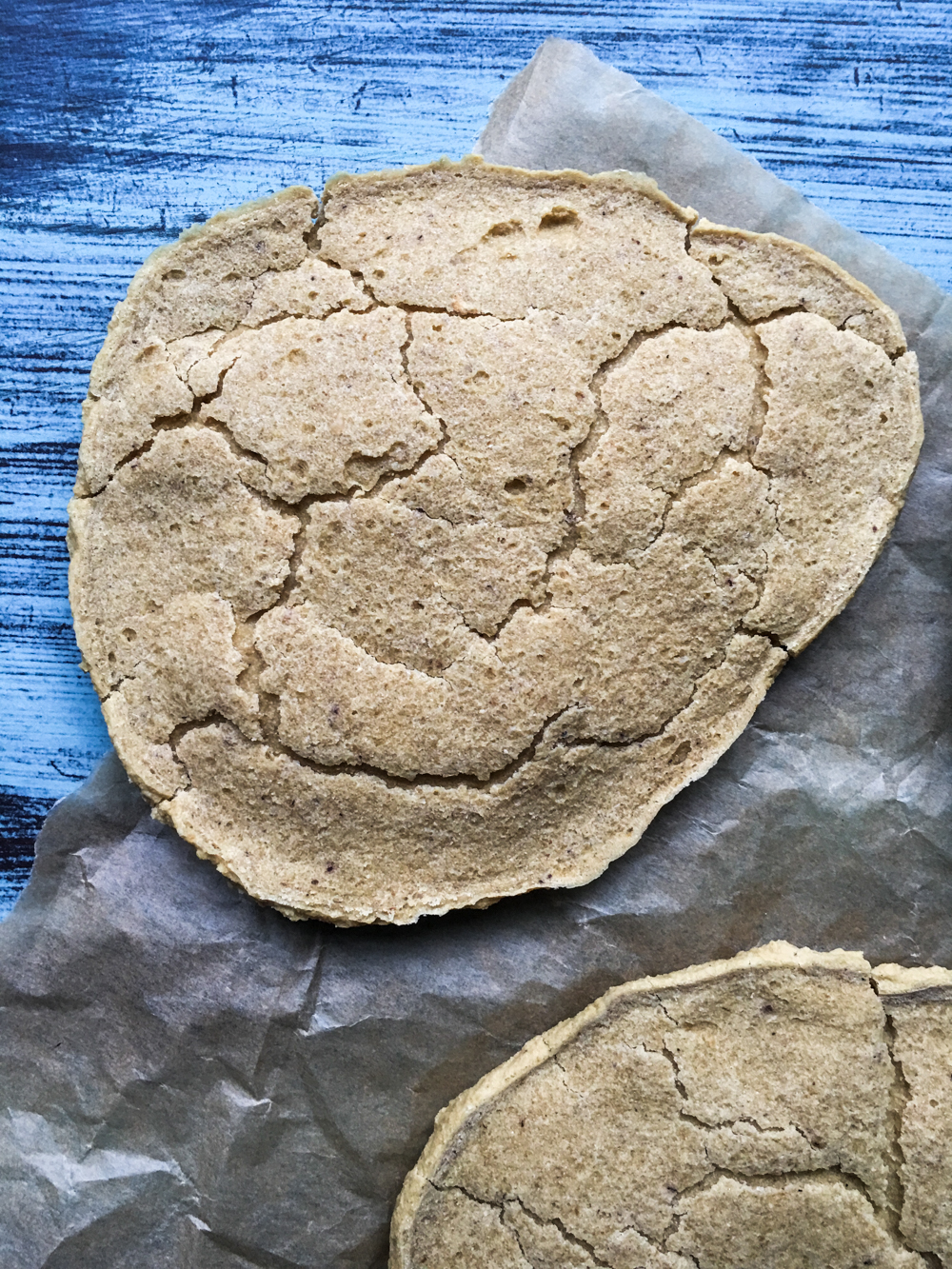Garlic & Onion Naan Bread


Some recipes are worth perfecting, and this was definitely one.
I originally had the idea for this raw naan bread when spreading out the mixture for raw Swiss Roll, on to a dehydrator sheet.
The shape I made reminded me of a classic naan bread shape, and to my delight, the texture of the roll was very bread like halfway through the dehydrating time.
So a couple of iterations later, taking out some of the the sweetness, and adding garlic and onion, I ended up with a naan bread I was really happy with.
Straight out of the dehydrator, this is warm and fluffy, just like a good naan bread should be. There’s a real sweet spot in the dehydration time, which I found to be at around 6 to 8 hours.
It’s the point the bread is dry enough to hold together and tear, but it’s still slightly moist inside.
Have a play with it and let me know how you get on!
I served this with wilted spinach, coconut yoghurt raita and curried chickpeas (curry powder, sesame oil, apple cider, salt).


Garlic & Onion Naan Bread
Nutrition (For one serving)
Ingredients
1st set
- 1 courgette zucchini, peeled
- 1/2 tsp salt
- 2 cups water
- 2 tbsp sesame oil cold pressed
- 1/4 cup nutritional yeast
- 1 tbsp onion powder
- 1 tsp garlic powder
2nd set
- 1/4 cup psyllium husk
- 1/2 cup oat flour
- 1/2 cup almonds ground
- 1/2 cup coconut flour
- 1/2 cup cashews
- 1/4 cup lucuma
Instructions
- Blend the first set of ingredients in a high-speed blender.
- Grind the second set of ingredients in a food processor until the cashews are ground to flour.
- With the food processor turned on, pour in the mixture from the blender slowly, so that the 2 combine thoroughly.
- Transfer to a bowl and leave to stand for a few minutes, so that it thickens up.
- You’re now ready to spread into 3 to 4 individual naan breads on a nonstick dehydrator sheet, around 1cm (⅓”) thick. I like to make the outside edge a little thicker than that.
- Dehydrate at 115 degrees F for around 3 to 4 hours, until you can turn them over, removing the nonstick sheet to complete dehydration for another 3 to 4 hours.
- There’s a real sweet spot for dehydration here, where they’re still slightly moist inside, making them more spongy. You can always make one really small piece when spreading them out, so you can use to test how dry they’re getting.
- Optionally, you can bend the bread about an hour before it’s finished, so that the cracks appear in it. I think this makes it much more visually appealing.
